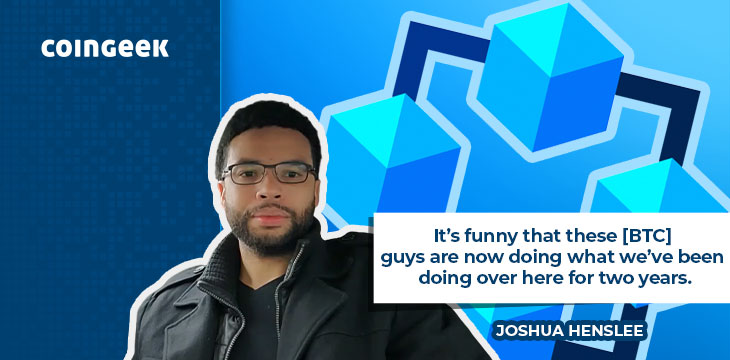|
Getting your Trinity Audio player ready...
|
The small blockers were yelling at the skies in a fury last week when Ordinals NFTs were launched on the BTC blockchain. Bitcoin developer Joshua Henslee released a new video sharing his thoughts on the situation and what might happen next.
What happened with Ordinals?
Henslee begins by recapping the situation. Someone figured out that, due to changes introduced by SegWit and Taproot, arbitrary data could be entered into BTC blocks. Henslee refers to this as a “color coin type solution,” noting how the central planners at BTC Core are furious; they are maintaining that BTC can only do six pre-approved transaction types.
“It’s funny that these guys are now doing what we’ve been doing over here for two years,” Henslee chuckles, noting how Kurt Wuckert Jr. has dubbed Ordinals “BSV-style NFTs.” He reflects that this should upset the BTC Core control freaks even more, and that’s all the more reason to do it.
Code is law and censorship resistance? More BTC contradictions
“I thought code was law,” Henslee says, bringing up one of the contradictions in the BTC narrative. While they claim that these developers have “tricked the code,” they haven’t stopped thinking about what this would mean for a world run by such code with no ability for humans to intervene and enforce our own rules.
Henslee thinks there might be a fork due to this, as the BTC overlords want to disable Ordinals. He notes that chief Faketoshi Adam Back put out a tweet calling for outright censorship before deleting it and trying to spin what he said. Other BTC Core devs have joined him in the call for censorship, while others have tried to spin away the situation as if it doesn’t matter.
“The block levels are full at a dangerous level of 1.5 megabytes,” Henslee says sarcastically. He says he thinks it’s cool that someone has figured out how to do this, but it’s also a shame it took so long, and it could have been done as far back as 2009 on the original Bitcoin protocol.
If more people start using BTC to mint NFTs, Henslee believes more users will start asking questions. This may lead to some of them discovering that way more can be done on BSV; audio, video, game attributes, and many other things with real use cases. “I hope they keep pushing forward. The more they push, the more people are going to start asking questions,” he says.
Key takeaways from this Joshua Henslee video
- Developers have found a way to launch NFTs on BTC. They’re called Ordinals, and they’re possible thanks to the engineering that took place during SegWit and Taproot.
- BTC Core members and other maximalists have called for outright censorship of Ordinals, including Adam Back. They accuse those behind this of tricking the code. This contradicts the idea that code is law and that BTC is about censorship resistance.
- Henslee sees this as both funny and a good thing. It’s funny because of the reaction of the BTC Core Cult, and it’s good because it will lead more people to start asking questions. In time, this could lead them to discover Bitcoin’s original capabilities in BSV.
Watch: Metaverse, NFTs & Blockchain

 01-05-2026
01-05-2026 




